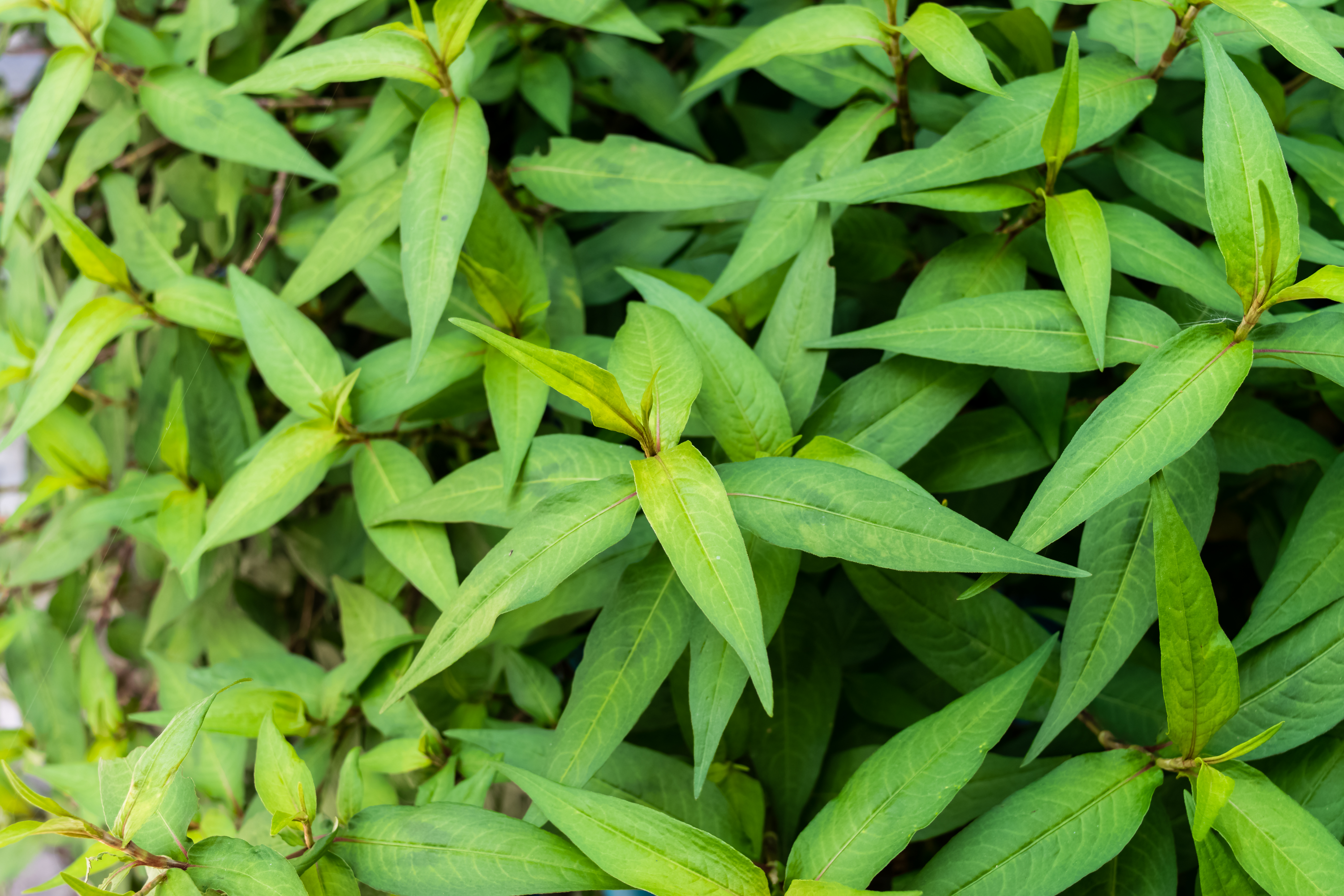Vietnamese coriander
(Persicaria odorata)

Description
Persicaria odorata, with common names Vietnamese coriander, rau răm, laksa leaf,Vietnamese cilantro, phak phai, hot mint and Cambodian mint, is a herb whose leaves are used in Southeast Asian and Northeast Indian cooking. Vietnamese coriander is not related to the mints, nor is it in the mint family Lamiaceae, but its general appearance and fragrance are reminiscent of them. Persicaria is in the family Polygonaceae, collectively known as "smartweeds" or "pinkweeds". The Vietnamese coriander is a perennial plant that grows best in tropical and subtropical zones in warm and damp conditions. In advantageous conditions, it can grow up to 15–30 cm (6–12 in). The top of its leaf is dark green, with chestnut-colored spots, while the leaf's bottom is burgundy red. The stem is jointed at each leaf. In Vietnam, it can be cultivated or found in the wild. It can grow very well outside in summer in nontropical Europe. It prefers full sun and well-drained soil. For colder climate zones, they should be brought inside for the winter and treated as a house plant. For climate zones that have milder winters, they will survive outside, although their growth may slow down. It rarely flowers outside the tropics. North American sources state Persicaria odorata can be grown outside in frost free parts of USDA Zones 9-11 in moderately fertile soil which is poor or well-drained but will remain moist to wet. It can tolerate full sun if there are breezes and boggy moist soil. However, part shade is desirable and it can be used as groundcover under trees. If winter temperatures drop below 7°C/45°F overwintering indoors is possible if humidity can be maintained. Northern European sources proscribe all but summer under glass as it is hardy to H1C (minimum 5-10°C) with West and South facing aspects preferable. Persicaria odorata grows up to 6-18 inches tall and wide (15-45 cm) in US and UK sources state 1 metre height by 1.5 m spread are possible in 2 to 5 years. Pests and diseases are not regarded as being problematic and it is even resistant to deer and rabbit.
Taxonomic tree:







